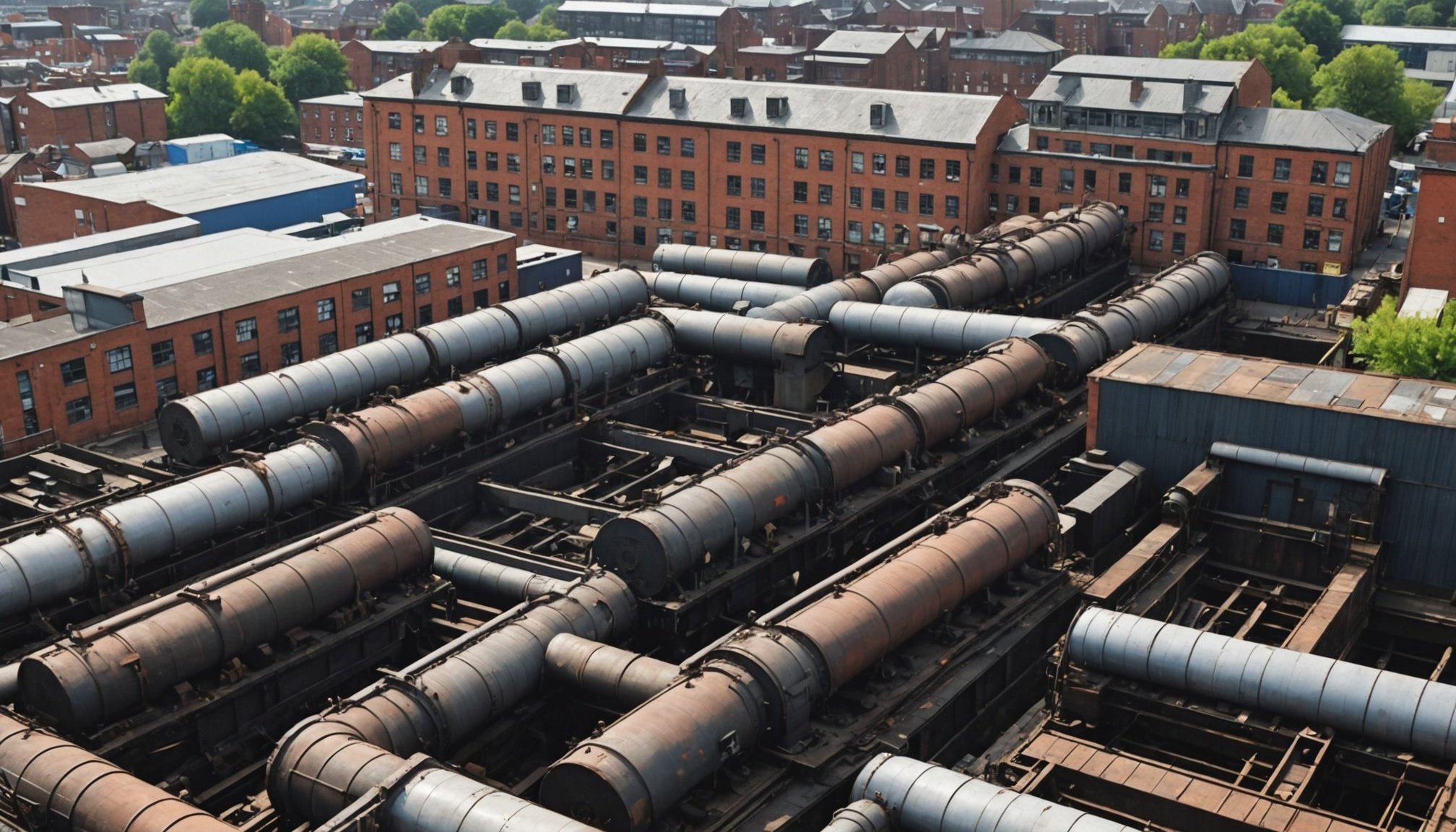Historical Overview of Sheffield’s Steel Industry
Sheffield, nestled in South Yorkshire, is renowned for its industrial heritage, particularly its illustrious steel history. This journey to becoming a steel production hub began in the early 19th century. The city’s advantageous location, close to essential resources like iron ore, coal, and water, catalysed this transformation.
Key innovations in steel production have marked Sheffield’s journey. The invention of crucible steel in the 1740s by Benjamin Huntsman revolutionised the industry, enabling the production of higher-quality steel. Later, in the mid-19th century, Henry Bessemer developed the Bessemer process, significantly improving efficiency in steelmaking and further cementing Sheffield’s standing in the global steel market.
In the same genre : Mastering the Art of Pub Quiz Night: Essential Tips for Thriving in England’s Traditional Trivia Scene
Sheffield’s industrial heritage is deeply rooted in these technological advancements. The city’s economy thrived on steel production, influencing its development and growth for decades. Its reputation for producing superior cutlery and tools became a symbol of quality that persists today.
As the Industrial Revolution unfolded, Sheffield’s steel industry not only fueled the local economy but also contributed significantly to the broader industrial growth of England. The legacy of Sheffield’s steel production continues to echo through its history, with many institutions preserving its rich past.
In parallel : Discover and Join Exclusive Guided Tours of London’s Hidden Gardens
Important Sites and Museums to Explore
In Sheffield, the Sheffield Steel Museums, Heritage Sites, and Industrial Landmarks are essential sites to grasp the historical significance of the city’s contributions to steelmaking.
National Emergency Services Museum
The National Emergency Services Museum offers an intriguing journey into the history of Britain’s emergency services. Located in a Victorian police and fire station, this museum features impressive displays related to Sheffield’s steel industry which supplied vital materials for emergency services equipment. Exhibits range from historic uniforms to fire engines, providing insight into the past and modern advancements.
Kelham Island Museum
At the Kelham Island Museum, visitors delve into the heart of Sheffield’s industrial past. The museum exhibits the evolution of steel production and its impact on the world. A stunning example is the River Don Engine, the world’s most powerful working steam engine. The museum also exposes visitors to the inventive spirit that propelled Sheffield to global prominence.
Sheffield Industrial Museum
The Sheffield Industrial Museum showcases Sheffield’s integral role in the steel industry. Its collections illustrate innovative machining techniques and the global influence of Sheffield steel. By exploring interactive displays and real-life workshops, visitors gain a comprehensive understanding of the industry’s evolution.
All these museums ensure accessibility and provide detailed visitor information on navigating both the history and practicalities of the sites.
Walking Tours and Local Guides
Sheffield’s industrial past comes alive through its walking tours, offering a unique glimpse into the city’s steel heritage. These Sheffield Walking Tours are meticulously designed to narrate the story of its legendary steel industry. Begin your journey with heritage walks that focus on the factories, workshops, and bustling areas that played pivotal roles in shaping Sheffield’s history.
For a deeper understanding, consider enlisting the expertise of local guides well-versed in steel history. They provide insightful tales and lesser-known facts that enrich the experience. Local guides, passionate about Sheffield’s heritage, often personalize the tours, catering to your interests and ensuring you see hidden gems.
If you prefer exploring at your own pace, self-guided tours offer flexibility and freedom. Equip yourself with detailed maps highlighting key landmarks and routes. Suggested routes might meander through Kelham Island Museum or the Abbeydale Industrial Hamlet, two prominent sites preserving Sheffield’s industrial narrative.
Remember, whether with a local guide or on a solo adventure, Sheffield’s heritage walks promise to be an engaging and informative journey through its industrial legacy. The tales of iron and steel await your discovery.
Tips for Tourists and Locals
When visiting Sheffield, it’s essential to explore its rich steel legacy while staying safe and efficient. Start by planning your itinerary around prominent industrial sites such as the Kelham Island Museum, which provides a comprehensive insight into Sheffield’s steel production history. Additionally, the Abbeydale Industrial Hamlet offers a look into the area’s transformation and tools once used in heritage travel.
For a well-rounded experience, combine your tour of industrial sites with local attractions. The Sheffield Botanical Gardens and the Millennium Gallery complement the historical theme, offering art and natural beauty that’s unique to the city. Exploring local attractions gives you a deeper connection with the region’s cultural landscape beyond its industrial past.
Here are a few practical tips to enhance your exploration:
- Utilise Sheffield’s public transport for ease of travel between sites.
- Wear comfortable shoes for walking and safety gear if required at certain locations.
- Engage local guides for enriched narratives and hidden gems.
Lastly, delve deeper into Sheffield’s past with resources such as local archives or dedicated history tours. These resources for further reading can augment your understanding and appreciation of this fascinating city’s heritage.
Engaging Narratives and Anecdotes
Sheffield’s identity is intricately woven into its steel legacy, a pivotal aspect of local history. The tales from Sheffield’s steelworkers and their families give a unique perspective on the city’s cultural tapestry, revealing charming intricacies of their lives and work. Their stories, passed down through generations, depict a vibrant narrative coloured by hard work, resilience, and community spirit.
One particularly captivating Sheffield anecdote involves generations of steelworkers gathering at local pubs, sharing stories of craftsmanship and camaraderie. These anecdotes show us how these workplaces were more than just job sites; they were communities in themselves, anchoring Sheffield’s working-class identity.
Sheffield’s industrial past also significantly shapes its present identity. For instance, the majestic Sheffield Cathedral is a symbol of resilience, standing strong amidst former steel glory and embodying the harmonious blend of industrial splendour and modern growth. These steel legacy stories remind us of the profound influence the industry has had on the city’s cultural and social landscape.
These rich anecdotes not only reflect Sheffield’s industrial heritage but also celebrate the personal connections and cultural impact, forging an ongoing bond between its past and present.











